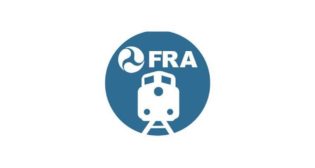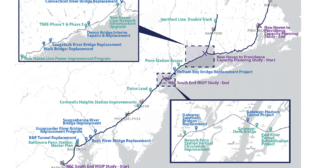
Experiential Travel and Amtrak
Written by Andrew SeldenAmtrak CEO Richard Anderson proposes to eliminate most of Amtrak’s interregional trains because, he says, they cater predominantly to “hobbyists” and “experience-seekers.” And, he asserts, hardly anyone rides between endpoints. This vision explains in large measure why Amtrak does so poorly in the competitive marketplace for intercity travel, and why its trivial market share for intercity passenger transport (smaller than motorcycles) continues to decline.
Not one element of Anderson’s stated rationale stands up to even superficial scrutiny.
The easy place to start is the nonsense about customers of the company’s biggest business segment being mere “experience-seekers.” Why exactly is that a problem? If “experience” was the motivation of even a plurality of Amtrak’s longer-distance customers, is that a bad business proposition? That idea would certainly come as a shock to Carnival Cruise Lines ($19 billion in annual revenue); Disney ($60 billion); Vail Resorts ($2 billion); the State of Colorado ($22 billion in annual tourist spending); Las Vegas ($36 billion); or the United States tourism industry ($1.09 trillion). Catering to “experience seekers” is a huge, profitable and rapidly growing business. Except, apparently, at Amtrak.
Anderson also disparages his business segment with the only actual profit, and greatest load factor and market share, because, he says, only a small percentage of its customers ride between endpoints. But the same is true of any Interstate highway, and of Amtrak’s own trains in the Northeast Corridor, where hardly anyone rides endpoint-to-endpoint, between Boston and Washington, D.C. This is not a reason to chop up I-80 and discontinue end-point trains on the NEC.
Endpoint business is not why any surface transport facility (besides escalators) exists. I-80 runs 2,900 miles coast-to-coast not for the trivial fraction of its traffic that wants to drive between San Francisco and Teaneck, N.J. (George Washington Bridge), but for the thousands of intermediate origin-destination possibilities it creates, whether one mile or one-thousand miles apart. Similarly, on a train route like the Southwest Chief, the train serves not just the endpoints but also hundreds of intra-route origin-destination pairs made possible only by operation of the through train (plus thousands more O/D possibilities through network connections). It isn’t possible to sell thousand-dollar sleeping car tickets between Albuquerque and Galesburg, Chicago and Flagstaff, or Cleveland and San Diego, unless the Chief covers the whole route. If a few customers want to travel Chicago-Los Angeles, so much the better. Anderson’s logic also dismisses as irrelevant the lost souls who want to pay a $1,000 or more to ride between San Bernardino and Chicago or Naperville and Los Angeles, because they are not “end-point customers.”
Amtrak’s own consistent failure successfully to operate non-stop trains in any market (they’ve tried it and failed every time in diverse markets: e.g., Washington, D.C.-New York, where they’re trying it again; Boston-New York; San Diego-Los Angeles) demonstrates that the bread-and-butter for even short rail markets is the network of intermediate stops, not the end-points. That is true a hundred times over in a long-distance environment, where average trip lengths exceed the total length of Amtrak’s short corridors, and the long-haul train itself creates a huge intra-route matrix of origin-destination pairs that expands geometrically the longer the route and the more connections it makes.
Anderson also dismisses Amtrak’s interregional trains because they mainly serve, he asserts, “hobbyists” (i.e., railfans). Apparently, to Amtrak it’s OK to transport commuters (three-quarters of Amtrak’s customers in the NEC are commuters, not intercity) but not intercity customers who prefer rail. Amtrak’s new marketing slogan: “If you enjoy traveling by rail, we don’t want you.” This is an extremely perplexing attitude, given that all rail passengers pay money for their tickets, and Amtrak’s legal charter is to provide a national network of intercity trains.
Anyone who, unlike Anderson, actually travels on the interregional trains knows that their customers are 99% people other than “hobbyists” and “experience-seekers”—they are normal people of all kinds using their preferred mode to get somewhere. Many are happy to spend two or three days doing so.
The demographics of interregional rail customers is the same as the domestic airlines, except that business travelers are underrepresented. These are people of every age and income using rail for as many different reasons as there are passengers. In the summer peak season, to be sure, one element includes families on vacations. Anderson would withdraw these trains because families use them for summer trips?
Amtrak’s perception of its interregional trains is not only dead wrong. It represents a disingenuous renunciation of one of the healthiest and fastest growing business sectors in the country, as well as Amtrak’s own largest and strongest business. What Anderson’s stated vision reveals is not that interregional rail travel is a bad business proposition, but that Amtrak and its management team don’t understand it and don’t know how to exploit it.
The nation, as well as Amtrak itself, is poorer as a result.
Andrew Selden is President of the United Rail Passenger Alliance.



